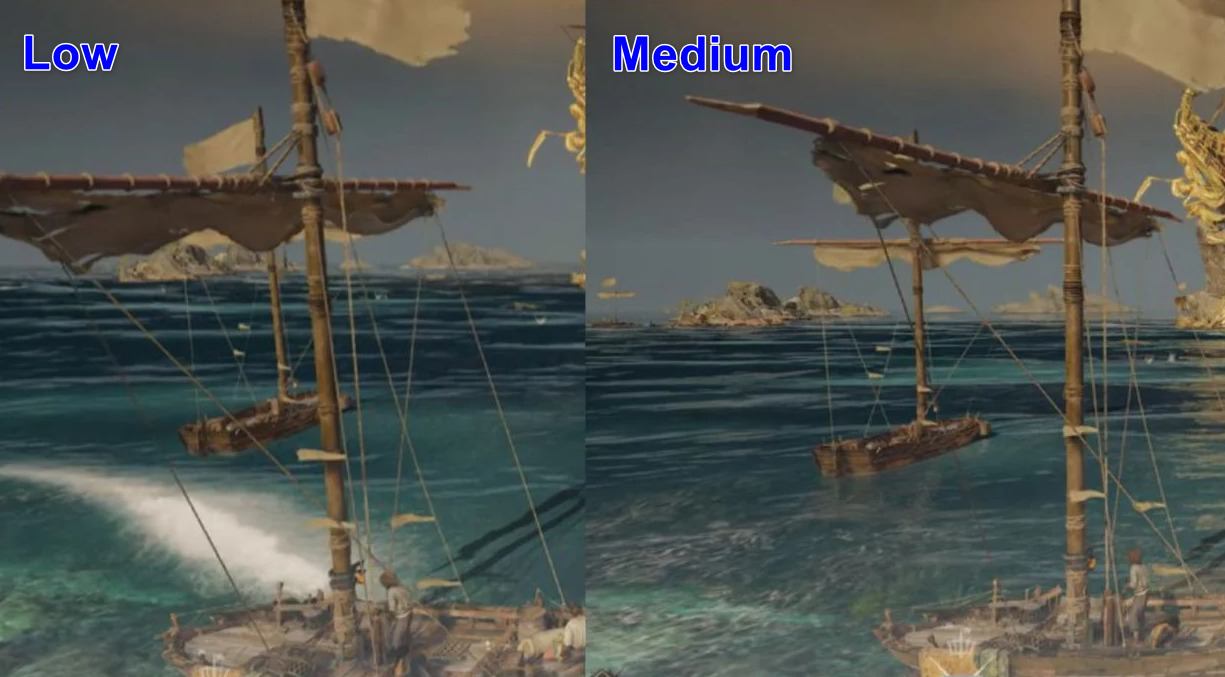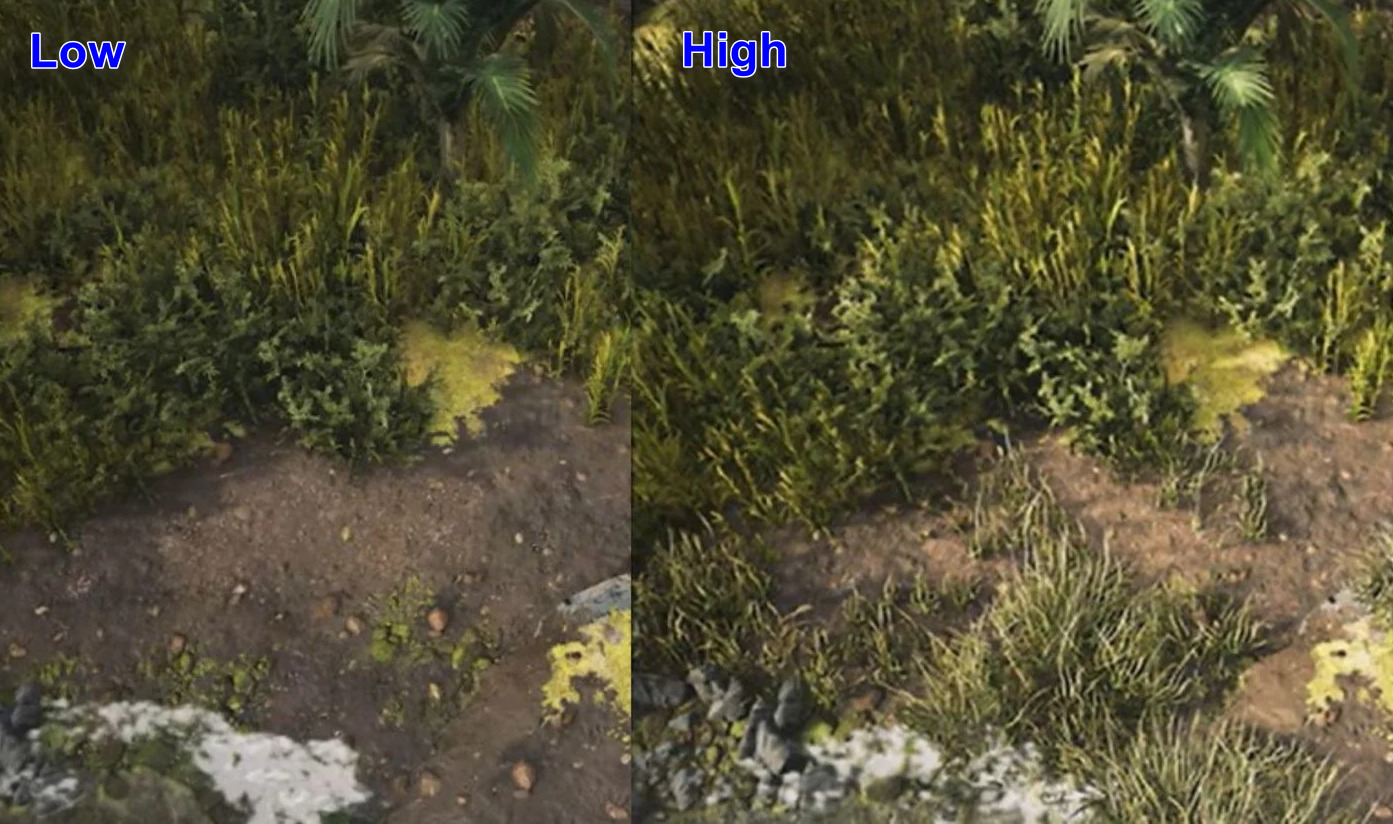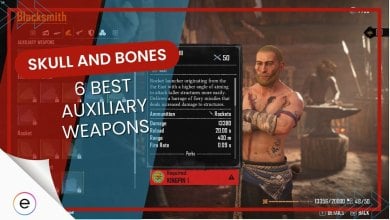Skull and Bones, launched by Ubisoft revolves around pirating and naval warfare, set in the Golden Age of Pirating. It has a good reception so far, and it looks like the game is here to say. However, that being said, standard settings can hold you back. This guide unlocks Skull and Bones’ best settings for an optimized experience.
The following settings impact FPS the most:
- Shadows
- Environment Details
- Clutter
- Water
- Volumetric Clouds
- Ray-Traced Global Illumination
Some bonus Windows optimization tips:
- Overclock your hardware
- Disable Game DVR
Skull And Bones Best Settings Summary
Here are the top adjustments for a smoother Skulls and Bones experience:
| Setting | Recommendation |
|---|---|
| Window Mode | Borderless |
| Resolution | Same as monitor |
| VSync | Off |
| Field Of View | Preference |
| FPS Limit | Off |
| Graphic Quality | Medium |
| Adaptive Quality | Off |
| Shadows | Low |
| Upscaling Type | NVIDIA DLSS |
| Environment Details | Low |
| Clutter | Low |
| Water | Low |
| Screen Space Reflections | On |
| Volumetric Clouds | Medium |
| Ambient Occlusion | On |
| Depth Of Field | Off |
| Motion Blur | Off |
| Ray-Traced Global Illumination | Off |
Head to Settings > Visual > Display Settings to access the first set of settings.

Then head to Settings > Graphics for the final set of settings.

Now read on below as I explain in detail how each setting will improve the game’s performance and FPS for you.
Window Mode: Borderless
Windowed Mode as Borderless integrates seamlessly with the desktop environment, so it’s frequently the best display option.
Resolution: Same As Monitor
For the best visual quality and performance, I advise you to set the game to match your native resolution.
VSync: Off
When it comes to boosting FPS and performance in Skull and Bones, turning off VSync is what I’d recommend as one of the best settings.
Field Of View: Preference
Changing the game’s Field of View (FoV) to suit your preferences can have a big effect on how the game plays. Expanding the field of vision (FoV) offers improved situational awareness.
Players can establish a balance that fits their playstyle, comfort level, and immersion preference by experimenting with different FoV settings. For reference, I set my FoV as 100.
FPS Limit: Off
To get the maximum frame rate and the smoothest gameplay in Skull & Bones, I’d recommend you disable the FPS limit or run the game with an uncapped frame rate.
Graphic Quality: Medium
In Skull & Bones, choosing a medium graphic quality setting creates a good balance between performance and visual fidelity.

Adaptive Quality: Off
While turning off Adaptive Quality enables players to individually adjust graphics settings to their hardware specifications and personal preferences for a more predictable and controlled gaming experience, turning it on can aid sustain consistent frame rates during intense situations. So it’s ultimately up to you on what you prefer, but I, myself, keep it off.
Shadows: Low
In Skull & Bones, lowering the shadows greatly boosted performance and frame rate for me. which is why I chose it as one of the best settings.

Upscaling Type: NVIDIA DLSS
For players, such as myself, with NVIDIA GPUs that are compatible, using NVIDIA DLSS (Deep Learning Super Sampling) as the upscaling type in Skull & Bones improves performance.
Environment Details: Low
In Skull & Bones, going with low Environment Details is a more sensible decision, in my opinion, to maximize performance. The degree of detail in the game’s backdrop objects and textures usually decreases when this setting is used.

Players with mid-range or lower-end hardware will find that adjusting the Environment Details to a lower value helps them balance the best performance in Skull & Bones with visual quality.
Clutter: Low
Setting Clutter to Low in Skull & Bones contributed to improved performance for me by reducing the density and complexity of in-game objects. Lower clutter settings generally mean fewer detailed objects, resulting in reduced strain on your GPU and higher FPS.

Water: Low
Skull & Bones’ Low Water setting greatly improves performance by simplifying the graphical representation of water surfaces.
Choosing low water settings is a sensible way to increase FPS, even if it leads to less realistic water images.

Screen Space Reflections: On
For a more aesthetically pleasing and lifelike gaming experience, I advise you to leave Screen Space Reflections enabled on computers with adequate GPU power. Depending on personal tastes and technology limitations, striking the ideal balance between visual accuracy and performance is the better option.
Volumetric Clouds: Medium
By setting Volumetric Clouds as Medium, you can achieve a balance between performance and visual quality. A more realistic and deep sky is produced by volumetric clouds, which enhances the gaming experience.
Ambient Occlusion: On
Skull and Bones’ Ambient Occlusion simulates the faint shadowing that appears in places where objects converge, adding to the game’s lighting realism. This setting adds depth and shading to scenes, making them more visually appealing and realistic.
I recommend players with mid-to-high range hardware to keep Ambient Occlusion turned on in order to experience better visual quality.
Depth Of Field: Off
I recommend turning off Depth of Filed for visual clarity. The visual effect depth of field mimics the blurring of background or foreground objects to highlight the main focus point.
Motion Blur: Off
In terms of Skull and Bones’s best settings, turning off Motion Blur is a great option for players who value responsiveness in their visuals as I do.
Ray-Traced Global Illumination: Off
Ray-Traced Global Illumination (RTGI) is a rendering approach that replicates realistic lighting interactions, although it can be computationally costly. Disabling RTGI in Skull and Bones increases speed. Even though RTGI can improve visual fidelity by faithfully capturing scene indirect illumination, it frequently necessitates a sizable GPU.
My Verdict
This concludes my best settings guide. With such a massive potential to be an amazing long-term game, the developers have a lot of pressure on them to keep delivering frequent content updates and to make sure the game works flawlessly but I’m happy to report they do keep the playerbase frequently updated on their Twitter/X page.
So far, I’m very happy with the game and I believe, by tweaking the game settings I mentioned, you can get a much better experience out of it.
Players online also have been testing different settings combinations and seeing what suits them best, as seen in the following tweet:
Skull & Bones – PC – 3440×1440 – Max Settings – RTX 3090 #SkullandBones pic.twitter.com/S5GGoHTfTe
— 4KPlayer (@4KPlayer8K) February 22, 2024
Hope you were able to gain some useful info from this guide. Happy gaming and see you next time!
Thanks! Do share your feedback with us. ⚡
How can we make this post better? Your help would be appreciated. ✍
Game literally stutters like hell for me. Finally these settings resolved issue for me and I\'m getting constant 80 FPS and more. Thanks



